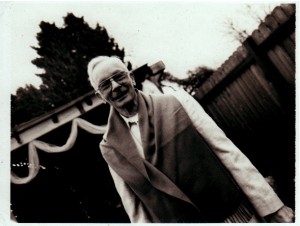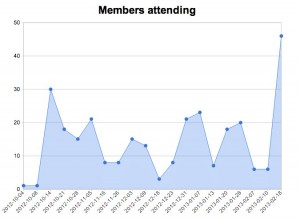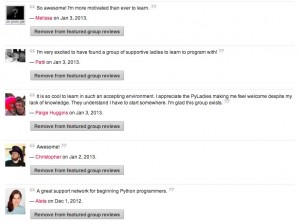This is about how I came to identify as a hacker. It was inspired by Crystal Beasley’s post. This is unfortunately also related to recent sexist comments from a Silicon Valley VC about the lack of women hackers. I won’t bother to hate-link, as others have covered his statements fully elsewhere.
I’ve written and talked about my path into the tech industry before, and my thoughts about how to get more women involved. But I didn’t really ever start the story where it probably should have been started: in my grandfather’s back yard.

I spent the first few years of my life in Libby, MT. Home of the Libby Dam, an asbestos mine and loggers. My grandfather, Bob, was a TV repairman in this very remote part of Montana. He was also a bit of a packrat.
I can still picture the backyard in my mind — a warren of pathways through busted up TVs, circuit boards, radios, transistors, metal scrap, wood and hundreds of discarded appliances that Grandpa would find broken and eventually would fix.
His garage was similarly cramped — filled with baby jars, coffee cans and bizarre containers of electronic stuff, carefully sorted. Grandpa was a Ham, so was my uncle and Grandma. I don’t remember exactly when it happened, but at some point my uncle taught me Morse code. I can remember writing notes full of dots and dashes and being incredibly excited to learn a code and to have the ability to write secret messages.
I remember soldering irons and magnifying lens attachments to glasses. We had welding equipment and so many tools. And tons of repaired gadgets, rescued from people who thought they were dead for good.
Later, we had a 286 and then a 386 in the house. KayPro, I think, was the model. I’d take off the case and peer at the dust bunnies and giant motherboard of that computer. I had no idea what the parts were back then, but it looked interesting, a lot like the TV boards I’d seen in piles when I was little.
I never really experimented with software or hardware and computers as a kid. I was an avid user of software. Which, is something of a prelude to my first 10 years of my professional life as a sysadmin. I’m a programmer now, but troubleshooting and dissecting other people’s software problems still feels the most natural.
Every floppy disk we had was explored. I played Dig Dug and Mad Libs on an Apple IIe like a champ. I mastered PrintShop and 8-in-1, the Office-equivalent suite we had at the time. And if something went wrong with our daisy wheel printer, I was on it – troubleshooting paper jams, ribbon outages and stuck keys.
My stepdad was a welder, and he tried to get me interested in mechanical things (learning how to change the oil in my car was a point of argument in our family). But, to be honest, I really wasn’t that into it beyond fixing paper jams so that I could get a huge banner printed out.
I was good at pretty much all subjects in school apart from spelling and gym class. I LOVED to read — spending all my spare time at the local library for many years, and then consuming books (sometimes two a day) in high school. My focus was: get excellent grades, get a scholarship, get out of Montana.
And there were obstacles. We moved around pretty often, and my new schools didn’t always believe that I’d taken certain classes, or that grades I’d gotten were legit. I had school counselors tell me that I shouldn’t take math unless I planned “to become a mathematician.” I was required to double up on math classes to “make up” algebra and pre-algebra I’d taken one and two years earlier. I gave and got a lot of shit from older kids in classes because I was immature and a smartass. I got beat up on buses, again because I was a smartass and had a limited sense of self-preservation.
The two kids I knew who were into computers in high school were really, really nerdy. I was awkward, in Orchestra, and didn’t wear the kind of cool girl clothes you need to make it socially. I wasn’t exactly at the bottom of the social heap, but I was pretty close for most of high school. And avoiding those kids who hung out after school in the computer lab was something I knew to do to save myself social torture.
Every time I hear people say that all we need to do is offer computer science classes to get more girls coding, I remember myself at that age, and exactly what I knew would happen to me socially if I openly showed an interest in computers.
I lucked out my first year in college. I met a guy in my dorm who introduced me to HTML and the web in 1994. He spent hours telling me story after story about kids hacking hotel software and stealing long distance. He introduced me to Phrack and 2600. He and his friends helped me build my first computer. I remember friends saying stuff to me like, “You really did that?” at the time. Putting things together seemed perfectly natural and fun, given my childhood spent around family doing exactly the same thing.
It took two more years before I decided that I wanted to learn how to program, and that I maybe wanted to get a job doing computer-related work after college. What I do now has everything to do with those first few months in 1994 when I just couldn’t tear myself away from the early web, or the friends I made who all did the same thing.
Jen posted an awesome chart of her nerd story. I made one sorta like it, but couldn’t manage to make it as terse.

Whether it was to try and pursue a music performance career after my violin teacher encouraged me, starting out as a chemistry major after a favorite science teacher in high school told me I should, or moving into computer science after several years of loving, mischievous fun with a little band of hackers; what made the difference in each of these major life decisions was mentorship and guidance from people I cared about.
Maybe that’s a no-brainer to people reading this. I say it because sometimes people think that we come to our decisions about what we do with our lives in a vacuum. That destiny or natural affinity are mostly at work. I’m one anecdata point against destiny being at work, and I have heard lots of stories like mine. Especially from new PyLadies.
Not everyone is like me, but I think plenty of people are. And those people who are like me — who could have picked one of many careers, who like computers but weren’t in love or obsessed with them at a young age — could really use role models, fun projects and social environments that are low-risk in middle school, high school and college. And as adults.
Making that happen isn’t easy, but it’s worth sharing our enthusiasm and creating spaces safe for all kinds of people to explore geeky stuff.
Thanks to an early childhood enjoyment of electronics and the thoughtfulness of a few young men in 1994, I became the open source hacker I am today.








